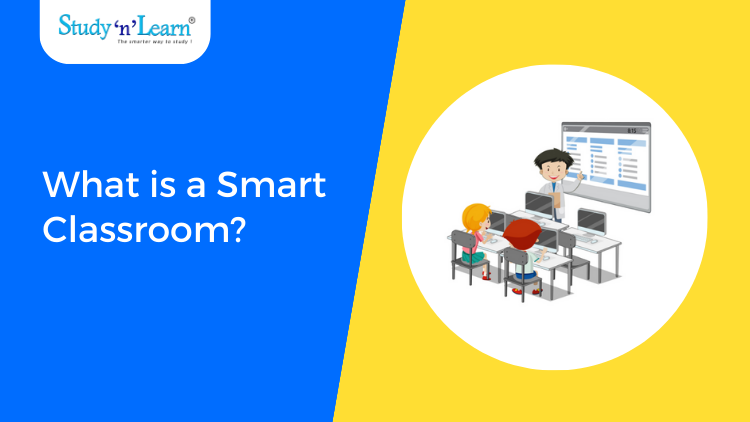
Multimedia Content: Smart classrooms incorporate multimedia elements, including videos, animations, simulations, and audio resources, to provide engaging and immersive learning experiences.
Internet Connectivity: Smart classrooms are connected to the internet, enabling students to access a vast array of online resources, conduct research, and collaborate with peers globally.
Digital Learning Tools: Smart classrooms leverage educational software applications and digital tools that enhance teaching and assessment, facilitate personalized learning,
and enable real-time feedback.
Data Tracking and Assessment: Smart classrooms provide teachers with tools to track student progress, collect data, and assess learning outcomes in real-time. This allows for targeted instruction and personalized feedback.
10 Benefits Of Smart Classroom
2. Caters to Different Learning Styles
Smart classrooms can cater to different learning styles in several ways. Firstly, smart classroom technology can provide personalized learning experiences, tailored to the individual needs and learning styles of each student. For example, students can access digital resources such as videos, simulations, and interactive activities, which can be customized to their learning preferences.
Secondly, smart classrooms can offer multiple modes of instruction, such as visual, auditory, and kinesthetic, to cater to different learning styles. For instance, teachers can use digital whiteboards, videos, and podcasts to provide visual and auditory instruction, and incorporate hands-on activities to engage kinesthetic learners.
Thirdly, smart classroom technology can facilitate collaboration and peer-to-peer learning, which can benefit students with different learning styles. For example, students can work in groups or pairs to discuss and solve problems, which can enhance their understanding and retention.
Overall, smart classrooms can offer a variety of instructional approaches and resources, allowing students to engage with learning in ways that suit their individual learning styles.
Read More: Importance Of Smart Class For Students: Boost Learning and Performance
8. Efficient Use of Time and Resources
9. Environmental Sustainability
10. Future-Ready Skills and Digital Literacy
Students develop essential digital literacy skills, such as navigating online platforms, conducting effective research, evaluating information credibility, and utilising digital tools for productivity and creativity. These skills are transferable to various fields and are increasingly sought after by employers.
Read More: Top 7 Smart Class Content Providers In India
Furthermore, smart classrooms foster critical thinking, problem-solving, and adaptability, which are crucial for thriving in a rapidly changing world. Students learn to analyse information, think creatively, and apply knowledge to real-world situations. They gain the ability to navigate through vast amounts of data, filter relevant information, and make informed decisions.
Turn Your Classroom into a Smart Classroom With Studynlearn Interactive Flat Panel?
Features Of Studynlearn Interactive Flat Panel
- 4K Resolution
- Zero bonding
- Multi-touch
- 3 Year on-site warranty
- No ongoing maintenance
- Long screen life - 50,000 Hours
- Built-in K-12 smart class content
- Lag-free and natural writing experience
- Dual OS: Win 11 & Android- Free to switch
- Interactive Board
Are you looking for a smart classes for your classroom? Watch This Video To Know More:
Smart classrooms have become a cornerstone of modern education, offering numerous benefits that enhance the learning experience for students. From promoting active engagement and personalised learning to facilitating collaboration and digital literacy, the importance of smart classrooms cannot be overstated.
By embracing technology and innovative tools, educators can create dynamic and inclusive learning environments that prepare students for the challenges of the digital age. As education continues to evolve, smart classrooms provide the foundation for equipping students with the skills, knowledge, and mindset required for success in the future.
To know more, call on 8927089270.
Frequently Asked Questions (FAQs)
A smart class is an innovative teaching environment equipped with technology like interactive whiteboards, projectors, and internet connectivity. It enhances traditional classrooms by promoting interactive learning, multimedia presentations, and collaborative activities, fostering a more engaging and effective educational experience for students.
Smart classrooms offer benefits such as interactive learning, improved engagement, and dynamic teaching methods. They enhance student understanding through multimedia presentations, encourage collaboration, and provide access to a wealth of online resources. Overall, smart classrooms create a more effective and enjoyable learning experience.
A smart classroom looks like a traditional one, but with added technology. It features interactive whiteboards, projectors, and possibly tablets. Students and teachers use digital devices, fostering interactive learning. The setup creates a modern and dynamic educational environment.
The main advantages of a smart classroom include interactive learning, increased student engagement, and dynamic teaching methods. The integration of technology, such as interactive whiteboards and digital devices, enhances the overall educational experience, making lessons more interesting and effective.

Leave your comment